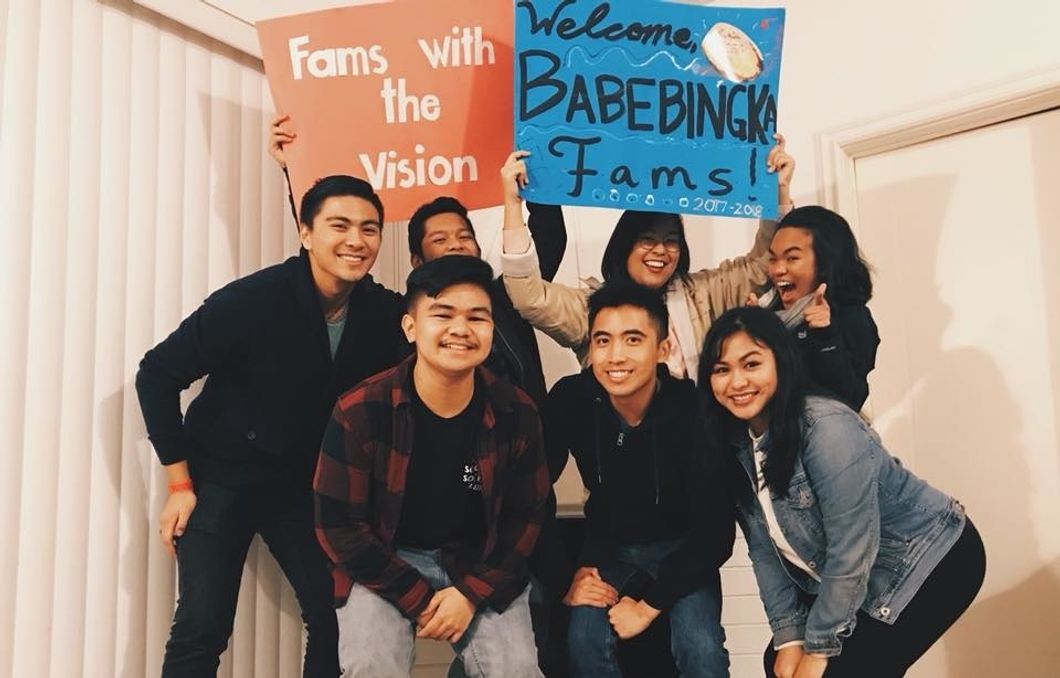During our first-year orientation, our college gave us a tassel attached to a blank list. We fill out what we want to have accomplished by the end of our fourth year and share it with the group. On my list, I put the usual: graduate, good grades, post-grad goals, and career networking. I also added "Filipino culture," because, as someone who grew up with mostly Hispanic peers at predominantly Latino institutions, I did not have much knowledge of Filipino culture nor did I have many Filipino friends. I always felt a disconnect because I did not have a group of friends in high school with shared cultural experiences and could not even feel comfortable when faced with the opportunity. Though it is important to have a diverse group of peers, there is something special in being friends with people culturally relatable. Also, I'd feel a stab of envy whenever I saw pictures of childhood friends at each other's family parties, and moreover, there was a strange sense of loneliness I couldn't help but experience. To address my goal, I joined the premiere Filipino organization on our campus, Samahang Pilipino.
My first year in Samahang was a learning curve. By the end of my first year in college, I was more educated about my community, its history, and my culture. More importantly, I started to develop a group of Filipino friends I had always wanted. By my second year, I got involved in many leadership opportunities the organization had to offer and developed many friendships along the way. However, at the end of it, I was burnt out, exhausted, and partially jaded by the experience. I decided to not continue with leadership, and the beginning of my third year sucked. I didn't have much to do anymore, all my friends were still being amazing in the space (and busy with it, too), and it felt off-putting. However, the break allowed me to take a step back from the leadership environment and give a strong sigh of relief. I was no longer tied to the responsibilities of the org and was able to see the people I had worked so closely with as who they were initially: my friends.
In retrospect, my subconscious knew it was time to leave the organization because I got what I wanted from it- culture and kinship. I am still grateful and appreciative of the leadership experience, and it actually developed some relationships further, but I pushed myself when there was nothing left for me. I learned about my heritage and I made core friends along the way, which is what I wanted out of it. The burnout came from digging for more than what I had asked for or really needed.
I have learned through this experience that there are moments where you must leave an organization, job, or even, a relationship. In my situation, I had to reassess the leadership roles that required more commitment than I was willing to give.
Before stepping foot into a community, ask yourself: What do I want from this experience? Throughout your journey, as long as it still matches your values and goals, you can be flexible with what you want from your outcome. However, and you'll know it when you feel it, you have to accept when it is time for you to go.
Here is a list of signs:
- When you have no more growth in the space.
- When the space does not benefit your direction towards your goals.
- When it becomes more burdensome than fulfilling.
- When you have given it your all and there's nothing left to give.
Knowing when to let go will keep any position or relationship left still healthy and positive, so when necessary, you can go back to the space without hesitation for a hand or a hug (I still love you, SP).
- The whole point of getting things done is knowing what to leave ... ›
- 11 Signs You Need To Leave Your Relationship ›
- Knowing When To Leave | HuffPost ›
- 7 Obvious Signs a Relationship Is Over: How to Know When to ... ›
- 10 Ways to Know It's Time to Leave Your Relationship | HuffPost Life ›
- Deciding to Leave a Relationship | Psychology Today ›
















